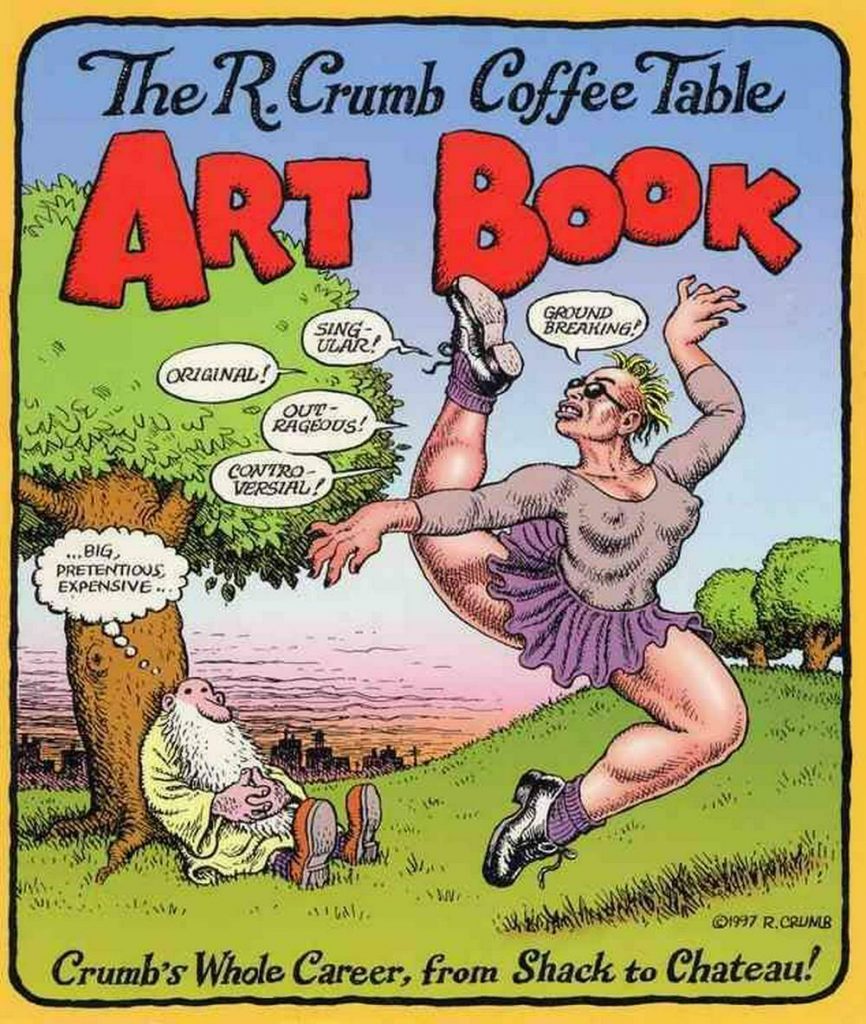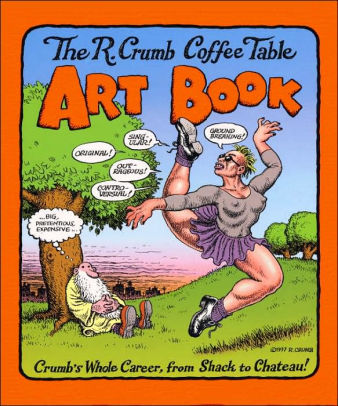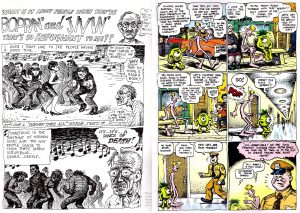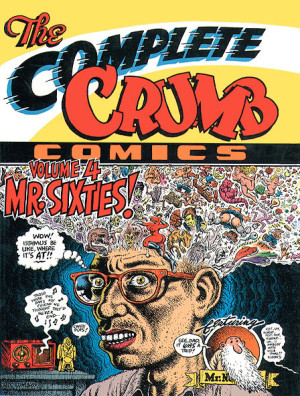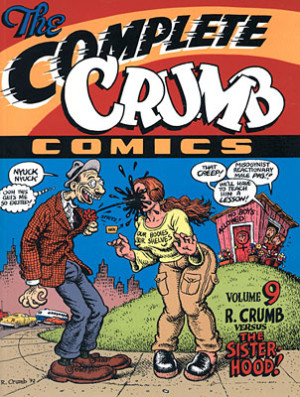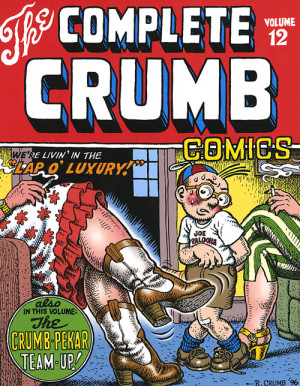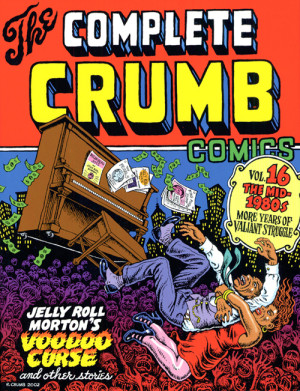Review by Frank Plowright
There is surely no quibbling with the estimation of Robert Crumb being one of the greatest ever comic artists. While many of his strips work through his neuroses and internal conflicts, from the mid-1960s onward these have been produced with such a creative intensity and technical skill that his cultural legacy and influence exceeds almost any other comic artist. This being the case, you can’t really go wrong with a thirty year retrospective, a greatest hits if you will, with Crumb providing introductions to fifteen chapters taking a broad chronological sweep through his work to the mid-1990s. A clever conceit on the part of editor Pete Poplaski ensures the chronology is autobiographical rather than when work was produced, so later Crumb strips appear early in the pagination, such as ‘Dumb’, his 1994 reflection on his childhood.
While most highly regarded for his groundbreaking comics, much of Crumb’s early work was commercial, and this is represented along with cubist paintings, and numerous self portraits, illustrations, doodles and roughed out strips from his religiously maintained sketchbooks. Some of these show a very different side to Crumb, such as meticulously envisaged street views, urban sketching decades before social media popularised the idea. He was also ahead of the game with reportage strips commenting on life in early 1960s Bulgaria. There is a transitional stage to Crumb’s art, following his LSD experiences when his flights of fancy emerged and he began to develop new characters, moving on from the salacious knockabout of Fritz the Cat to more quizzical extrapolations of the 1960s and 1970s. The more reflective 1980s and 1990s strips are even more beautifully crafted.
A slight drawback affects what’s otherwise a treasure trove. Many featured strips were originally in black and white, which was also the case for all sketchbook material. A decision has been taken to colour most non-sketchbook strips, presumably because the luxury oversized format demands more colour. It could equally be supposed that had Crumb been able to afford to produce his strips in colour at the time, he would have done so. Poplaski’s colour is very sympathetic, and true to the colour Crumb used the covers of his comics. However, a sense of colour is one of the few artistic techniques not to number among Crumb’s strengths, and while being faithful to Crumb’s primitive colouring, Poplaski isn’t doing the art overall any favours.
While avoiding Crumb’s most controversial material, this is a warts and all sampler. Crumb is presented as he is, misanthropy intact with no apologies, and that’s going to offend some people. The worst of Crumb’s racist caricatures are omitted, but the unpleasant fantasy of the final strip’s view of women (including a rape scene) is unnacceptable. So, at what point do we damn art due to its creator? From Caravaggio on down through the centuries a long list of respected greats in many fields led less than honourable lives, their indulgences, crimes and views far worse than Crumb, yet not as intimately entwined with their art. It’s something Crumb addresses in one of his introductions recalling a visit to Chester Gould. Would Dick Tracy have been anywhere near as compelling if not fuelled by Gould’s reactionary indignation? The same applies to Crumb, but his dark side is far more explicit, and excused by too many people because the art is so good.
Live with that, and 250 oversized pages of unfettered Crumb is a visual and narrative goldmine, and used copies online are absolute bargains.
